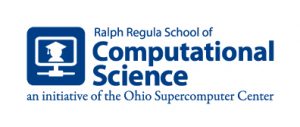COLUMBUS, Ohio – September 19, 2006 – A new school focusing on computational science plans to propel Ohio’s workforce to a new level of productivity in the knowledge economy.
The Ralph Regula School of Computational Science (RRSCS) is a virtual statewide school focused on teaching computer modeling and simulation. A collaborative project of the Ohio Supercomputer Center (OSC), Ohio Board of Regents and Ohio Learning Network (OLN), RRSCS will instruct students on modeling and simulation applications to solve real-world problems in a wide range of fields including medicine, manufacturing, finance, and earth science. As a result, RRSCS graduates will be better prepared for their chosen fields of study, placing them at the cutting edge of innovation and discovery.
“The U.S. has had an advantage in innovation – in the design of new products, and in bringing new products to market more quickly than our international competitors,” said Dr. Steve Gordon, acting director of RRSCS. “These innovations are greatly enhanced with the use of computational modeling in design and discovery.”

Businesses recognize computational science as an essential tool for innovation and use it to develop new products. Researchers do the same to expand the frontiers of knowledge. The Regula School will help ensure that Ohio has the skilled people needed to support this new approach to innovation. The school will rely on participating colleges and universities to confer degrees and certificates and offer their expertise to:
- manage a multi-institutional, interdisciplinary undergraduate minor in computational science;
- cultivate and maintain curricula standards for computational science degree programs and certificates;
- provide assistance (with OLN’s help ) in using technology to deliver courses and programs in the most convenient and effective way for students;
- coordinate with industry to ensure that insights gained from the workplace enter the curriculum as quickly as possible; and
- support innovative ideas for strengthening program effectiveness, such as a Computational Co-Op program that would make it easier for students to work directly with business and industry while actively pursuing a degree.
An undergraduate minor is set to begin in autumn 2007, with modules being tested during this academic year. The computational science minor will enable science and engineering majors to apply computational tools directly to their area of study. Students completing the minor will be able to understand and build mathematical models related to their disciplinary area.
In addition, Project Lead the Way (PLTW) has developed a four-year sequence of high school courses geared toward science and technology. When combined with college preparatory mathematics and science courses in high school, these courses will introduce students to engineering and engineering technology prior to entering college. OSC and the Ohio Board of Regents are working with PLTW to develop a new course in computational science.
Another RRSCS project is to develop tools to help instructors use computational science in the classroom and for research projects. For example, the Genome Research Institute Discovery Platform, or GRIDP, is a joint effort between OSC and GRI for bioinformatics researchers who do not have advanced computer programming training. This will allow researchers to replace the complex code-writing method of high performance computing (HPC) with an easier to use point-and-click interface. RRSCS will be used to disseminate information about GRIDP’s production version so that other universities have access to this new system.
RRSCS is linked with OSC’s Blue Collar Computing initiative to extend the educational pipeline of high performance computing to help industry. Its aim is to provide training and certification in computational science as well as HPC access for to businesses that currently lack the expertise or capacity to utilize HPC applications to improve their competitiveness in the international marketplace.


